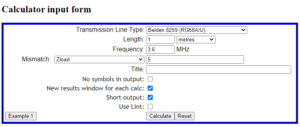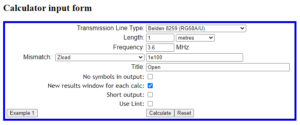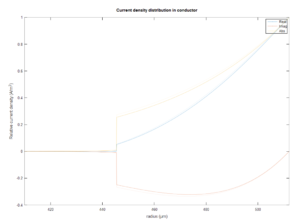We are traditionally taught transmission line theory starting with the concept of complex propagation constant γ, and that loss in a section of line is \(Loss=20log_{10}( l |\gamma|) dB\) where l is length. That is the ‘one way’ loss in a travelling wave, also the the matched line loss (MLL) (as there is no reflected wave).
There are some popular formulas and charts that purport to properly estimate the loss under standing waves or mismatch conditions, usually in the form of a function of VSWR and MLL, more on this later.
Let’s explore theoretical calculations of loss for a very short section of common RG58 at 3.6MHz with two different load scenarios.
The scenarios are:
- Zload=5+j0Ω (VSWR50=10); and
- Zload=500+j0Ω (VSWR50=10).
Above is the RF Transmission Line Loss Calculator (TLLC) input form. A similar case was run for Zload=500Ω. Continue reading The devil is in the detail – real world transmission lines and loss under standing waves








